I. Studio Staff Information
1 Head of Studio

Yun Wang
Yun Wang, Pd.D., Chair Professor and doctoral supervisor.
Professor Wang serves as the department chair of Landscape Architecture at Shanghai Jiao Tong University, the program head of landscape architecture, the founder and chief designer of Shanghai Edging A&LA Co.Ltd, a vice chairman of the Shanghai Society of Landscape Architecture, an executive director of the Shanghai Exploration & Design trade association, Managing Director of the Research Institute of Ancient Landscape Architecture for the Yuan Ming Yuan Society of China, a member of American Society of Landscape Architects (ASLA), and a member of the International Federation of Landscape Architects Asia-Pacific (IFLA-APR) .
Professor Wang has engaged in teaching, academic research and design practice for over 20 years in the area of landscape architecture. He has devoted himself to the history and theoretical study of Shanghai modern gardens, renewal landscape planning and technology in waterfront space, and the concept and technology of Jiang Nan (South of the Yangtze River region) traditional garden landscapes. He focuses on the innovative integration of the traditional and the modern in the course of landscape planning and design. He has published four books and over 50 academic articles. He has submitted the winning bid for many national and provincial planning projects, and has overseen more than 200 planning and design programs. Furthermore, Professor Wang has won over 40 domestic and international awards, including two Awards of Excellence and three Honorary Awards from the International Federation of Landscape Architects Asia-Pacific (IFLA-APR), and two international awards from the British Association of Landscape Industries. Professor Wang has also been honored with titles such as “an outstanding figure in national architecture”, and “a person of excellence in the investigation and design industries for the 70th Anniversary of founding of PRC.”
2. Team chief members

Xiaomin Tang
Xiaomin Tang, Ph.D., Associate Professor
Professor Tang serves as an associate professor of the Landscape Architecture department at Shanghai Jiao Tong University, and is an executive director of the first group of landscape architecture national joint demonstration training bases for graduate students (Shanghai Edging - Shanghai Jiao Tong University). Professor Tang has an interdisciplinary academic background from landscape architecture, urban planning and environmental science. She was a visiting scholar at Cornell University, a member of the Council of the Shanghai Society of Landscape Architecture Council, a member of the American Society of Landscape Architects and a member of the International Federation of Landscape Architects Asia-Pacific. Professor Tang was awarded as a finalist for the Shanghai Star of Investigation and Design Prize commemorating the 40 anniversary of China’s reforms and opening up.

Dan Chen
Dr. Chen is a lecturer in the Department of Landscape Architecture, at the School of Design, Shanghai Jiao Tong University. She received her Bachelor’s Degree from the Beijing Forestry University, Master’s from Tongji University, and Doctoral Degree from the University of Florida, all in Landscape Architecture. She has engaged in practice, research, and educational work in landscape architecture for more than 10 years. Aiming at exploring the leading academic research on design practice, she studies the social, economic, and ecological functions and mechanisms of urban public open space, and proposes theory in support of landscape architecture practice. Dr. Chen leads and participates in more than 20 landscape planning and design projects, mainly in areas of regional landscape ecological planning, landscape renewal of urban public open space, and rural landscape planning and design.
Dr. Chen has received more than ten international awards, including three awards for excellence, and one honorable mention from the International Federation of Landscape Architects Asia-Pacific (IFLA-APR) for the project “From A Greenbelt to An Emerald Necklace: Research and Evaluation of a Project to Produce Urban Renewal through Plant Communities in Shanghai’s Outer Ring Greenbelt”, and one international award from the British Association of Landscape Industries for “Renewal Design of Shanghai Zuibaichi Park”. In addition, at least five of her students have won design competition awards under her supervision, including for the “Yuanye Cup” international competition for College Students (2017 and 2018), for the exhibition of outstanding graduation design works of landscape architecture majors in national colleges and universities (2018), and for excellent bachelor theses (top 1%) of Shanghai Jiao Tong University (2020).
Dr. Chen has published one monograph, one textbook, and over 10 papers. She oversees a National Natural Science Foundation project.

Yang ZHANG
Dr. Zhang is a lecturer in the Department of Landscape Architecture, at the School of Design, at Shanghai Jiao Tong University and is a visiting scholar at the University of Pennsylvania. He is also a reviewer of the magazine Landscape Architecture. His research focuses on smart landscape, landscape planning and design and urban biodiversity.
Dr. Zhang has participated in three national-level and provincial-level projects, and has published many professional papers in core journals. He has hosted and participated in more than 20 horizontal projects on the topic of smart landscape and landscape architecture planning and design based on the results of academic research. These include the Beijing Haidian Park Smart Transformation Phase II Construction, Beijing Sub-center Smart Landscape System Construction, G-Park Smart Energy Park Construction, and more. He has won nine international design awards, including IFLA Asia-Pacific Landscape Architecture Awards and the BALI National Landscape Award. In addition, many of his students have won the student competition award of the Chinese Society of Landscape Architecture under his supervision.
Contact
Shanghai Edging A&LA Co.Ltd
Address: Room 3001, Soho 1 East, Guosheng Center, Lane 388, Zhongjiang Road, Shanghai
Email: wangyun03@sjtu.edu.cn
Tel: 021-61677866
II. Design concept, professional expertise and design features
The landscape team aims at establishing a method and system for high-density urban landscape design, serving the national strategy of Yangtze River Delta integration. This is based on “Renovation and Restoration,” and “The Regional Integration of the Yangtze River”, which are both parts of the national strategic implementation of this age’s requirements for the development of landscape architecture.
(1)A focus on large-scale urban waterfront landscapes, exploring innovative resilient waterfront landscape design concepts and methods.
The studio’s research highlights the spatial renewal of green park recreational space, waterfront landscape space design and recreational opportunities, and the urban construction of linear waterfront landscapes.
It widely utilizes urban waterfront public space planning and design practice in the Yangtze River Delta, including through aspects of water security and ecology, water town culture and memory, as well as the technological application and the concept of the sponge city. Wangyun Studo studies the path and strategy of landscaping, ecologicalization, and the human culture of large waterfront spaces. It also explores methods and systems for the construction of urban waterfront landscape planning and design concepts, with memory, integration and symbiosis as core concepts.
(2)Inheriting and passing down the “Jiangnan Water Rhyme” garden culture, and establishing a design paradigm for the restoration and reconstruction of Jiangnan (South of the Yangtze River region) traditional gardens.
Based on ideas from classical gardens in the South of Yangtze River region, the team explores how to satisfy the need for modern amusements and how to inherit and pass down the artistic essence of Chinese traditional gardens by refining the positive and leaving out what remains. It summarizes concepts for the creation of Jiangnan gardens including “water and park integration” and “integration of mood and mind”, to restore old districts. The studio thus forms complete technical regulations and design norms. These apply to the collection and reuse of old materials, landscape organization, as well as the penetration of inter and outer gardens, the creation of public activity space and the regeneration of ancient heritage, local spirit, and culture.
(3) Exploring the renewal design of high-density urban gardens aiming at urban and rural landscape regeneration
Under the policy background of urban refinement measures, and considering the problem of high-density urban areas, Wangyun Studio proposed a system of urban landscape renewal planning focusing on “Blue-Green spatial arrangements”, with “best orientations” for public green space renewal plans, and action guides for precise greening projects on “idle urban lands”. In renewal design projects for small gardens and microgreen spaces in multiple regions, the team promoted the idea of “joint governance and joint construction”. They established a community design process through the advantage of a rich-data driven response to surveying user requirements, as well as cooperation with government authorities, community administrators, and community residents who participated in the whole design process; Under the strategic background of national rural revitalization, the team completed several demonstration projects which extended the practice scope from the city to the development of multiple all-encompassing tourist and scenic rural areas.
III. Homepage link/WeChat official account
Homepage link: www.edging.sh.cn
WeChat public account: Shanghai edging
IV. Featured Studio Projects
Memory·Fusion·Symbiosis——Linking up the pearls on the East Bank of the Huangpu River: Yangjing, Zhongzhan and Yaohua Park
Project Address: East Bank of Huangpu River, Shanghai
Type: Waterfront Strip Park
Scale: 24.6 hectares
Year: 2017-2018

In 2018, after 15 years of planning and construction, the riverside public open spaces within the 45 kilometers on both sides of the Huangpu River in Shanghai were connected. This realized the vision of “returning the river to the people and the scenery to the city”. The construction of the three parks in this project have connected three important “key points” along the 21 km coastline on the East Bank of the Huangpu River.
The design artfully solved the problem of height differences between green spaces and the adjacent high-piled wharfs. It constructed a three-dimensional, multi-leveled system for cycling, running and walking. These “three roads” are connected with the river, water, flowers, and woods. They link up experiences for all ages, including activities that use all of the senses.
The project organically renews the riverside’s industrial shoreline, restores the environmental foundation on which the riverside space is based, and allows the riverside to become the ideal top-choice for public leisure.
With the cooperation of many multidisciplinary-professional design and research teams, we created an 180-degree panoramic balcony along the riverfront.
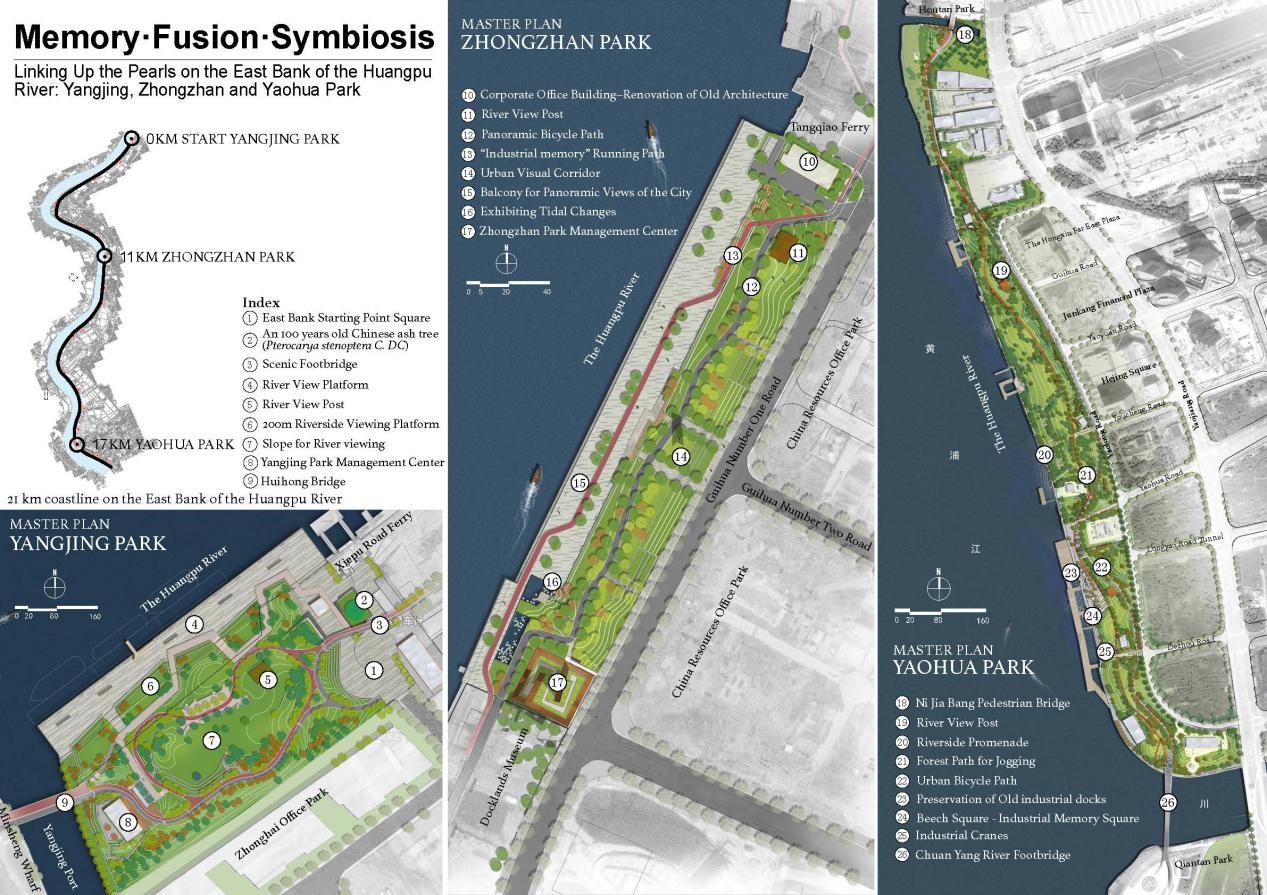

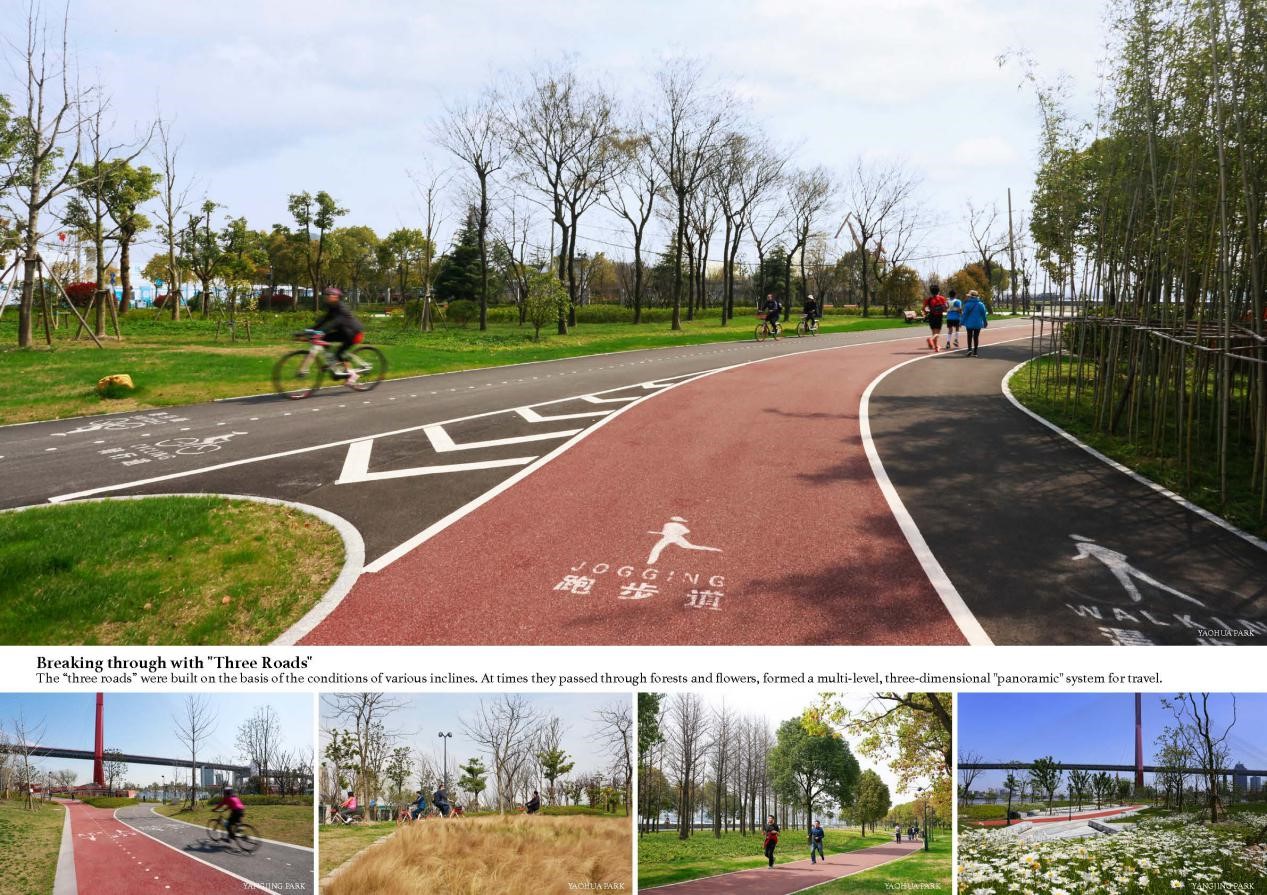
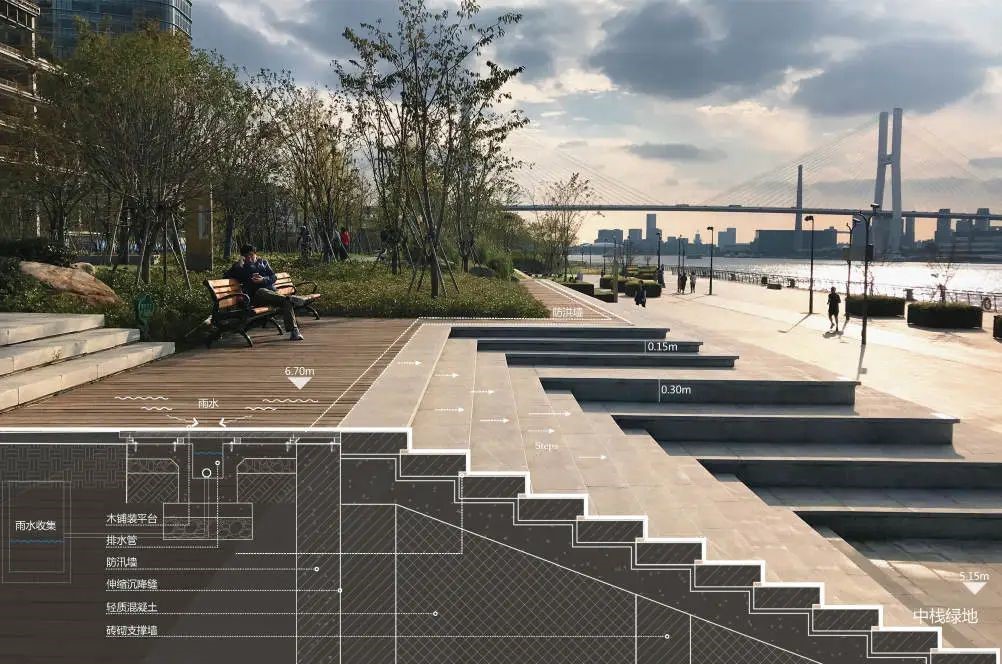
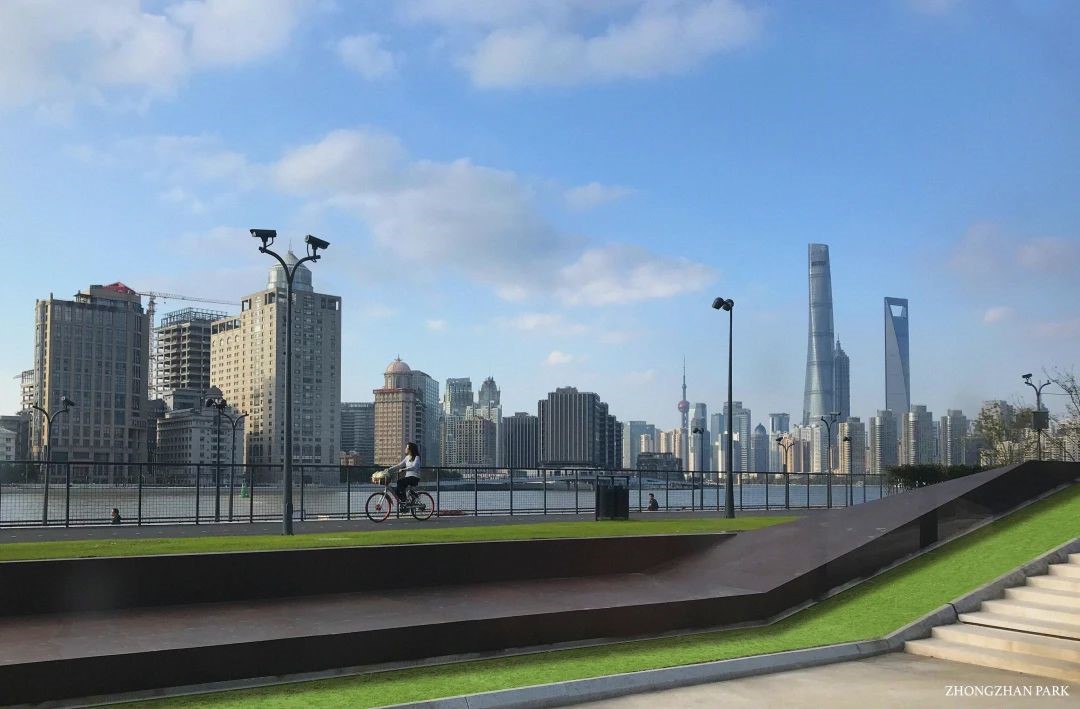

Awards
★ 2019 International Federation of Landscape Architects(IFLA) APR
Award of Excellence (open space category)
Link: https://mp.weixin.qq.com/s/kvWRY6dmkyhBkCGNrDwvbA
From Green Belt to Necklace: Post-evaluation and Urban Renewal Research on Plant Communities of the Outer Ring Green Belt in Shanghai
Project Address: Shanghai Outer Ring Road
Type: Urban Green Corridor
Scale: Total length of 99.8 kilometers, total planned area of 72.41 square kilometers
Year: 2016-2017

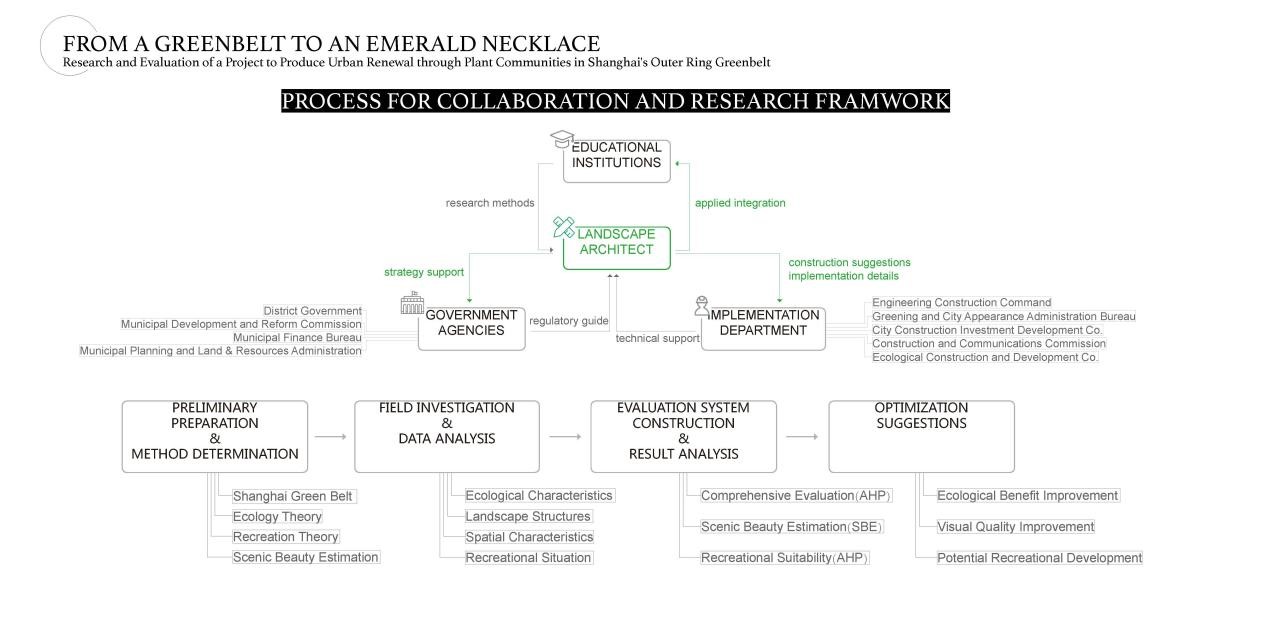
In the past two decades, the Outer Ring Green Belt has brought unmeasurable landscape, ecological and social benefits without human intervention. The future direction of its functions and developments has received much attention and led to intensive discussions. In this research project, we conducted site investigations on 101 plant community sample plots in the Outer Ring Green Belt throughout four different seasons, evaluated the advantages and disadvantages of plant communities from the perspective of their ecological functions and explored the possibility of increasing its recreational functions. Combined with the requirement of urban renewal development, plant community patterns with various functions were found and optimized, which could be useful in future work. This study is conducted by a multi-government team of researchers and is noteworthy for its large study area, long study period and innovative combination of cross-disciplinary information. The results evaluated the whole Outer Ring through four seasons in the past 25 years and proposed the theoretical basis and optimized ways to meet new requirements of improving urban security patterns and the networking of public spaces.
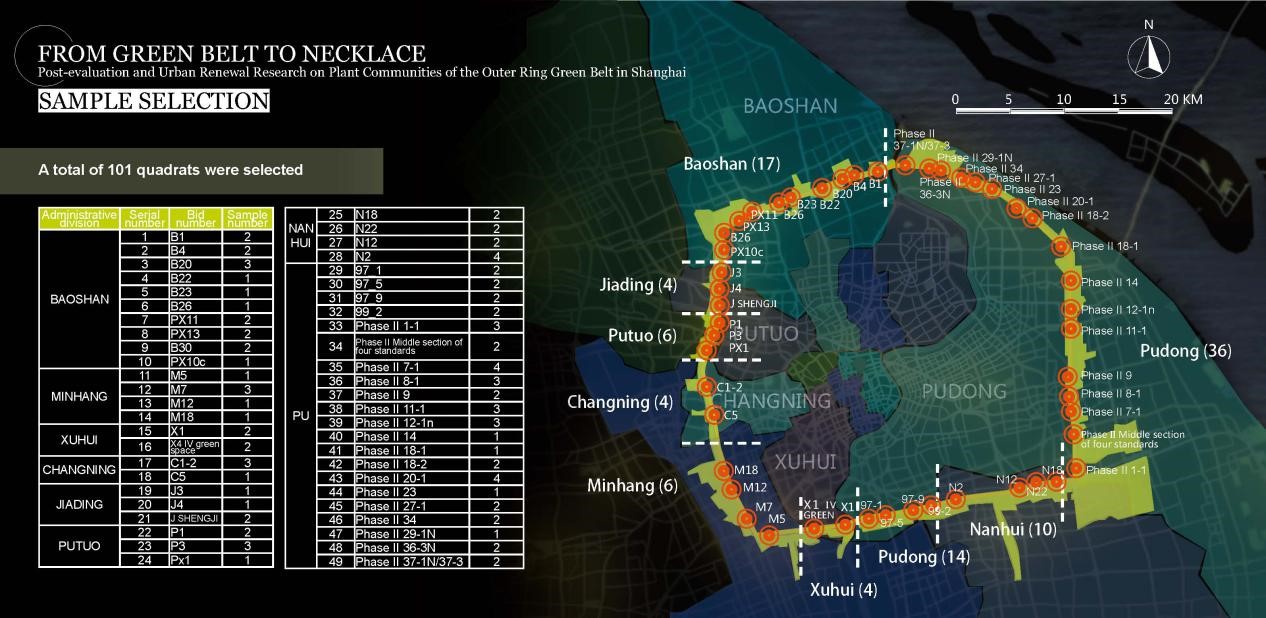

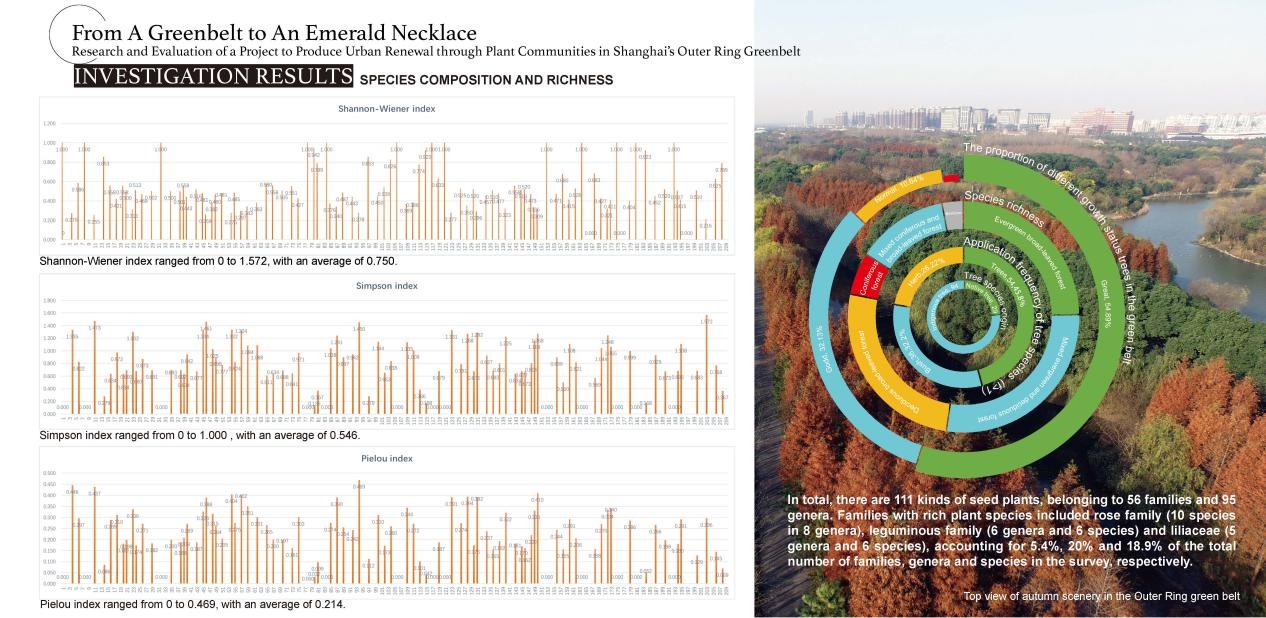
Awards
★2019 International Federation of Landscape Architects(IFLA) APR
Award of Excellence Analysis & Master Planning Category
Link: https://mp.weixin.qq.com/s/NEND43KY_-6r_1LocAzcTw
Improving the Landscape of the Middle Section of the Ancient Canal of Zhenjiang—The Throat of the South of the Yangtze River Canal
Project Address: Ancient Canal, Zhenjiang
Type: Canal Park
Scale: Total length of 4.9 kilometers, designed area of 64.52 hectares
Year: 2010-2014

An important part of the Grand Canal of China—a world cultural heritage site—is the ancient canal of Zhenjiang. Over time, the canal’s function as a lane for shipping has departed from the stage of history. The project for improving the landscape of the middle section of the ancient canal of Zhenjiang is the initial part of a construction project for creating a Zhenjing ancient canal landscape belt. And after 10 years of continuous construction on the site, the vitality of the canal has been restored.
(1)The project has enhanced the capacity for flood resistance of the city center and its ability to prevent waterlogging.
(2)The project has improved the open space plan of Zhenjiang city, which is characterized by “mountains in the south and rivers in the north” and by generally being a city of mountains and bodies of water.
(3)The project included the construction of the city’s primary public waterfront activity area. The site was rated as one of the ten most popular new urban landscapes by the city’s residents.
(4)Through controlling pollution in the watershed of the ancient canal, as well as through ecological rain and flood management, and construction of an ecological water bank, the project has improved the water quality and the environment. As a result the site has become the pilot project for “sponge city,” a demonstration project of Zhenjiang.
(5)This project classified, protected and effectively used natural heritage resources, the heritage of water conservancy facilities, of settlements, and other cultural heritage resources. It has accumulated experience and methods for the protection and renewal of the entire ancient canal of Zhenjiang and even the ancient canal heritage of China.
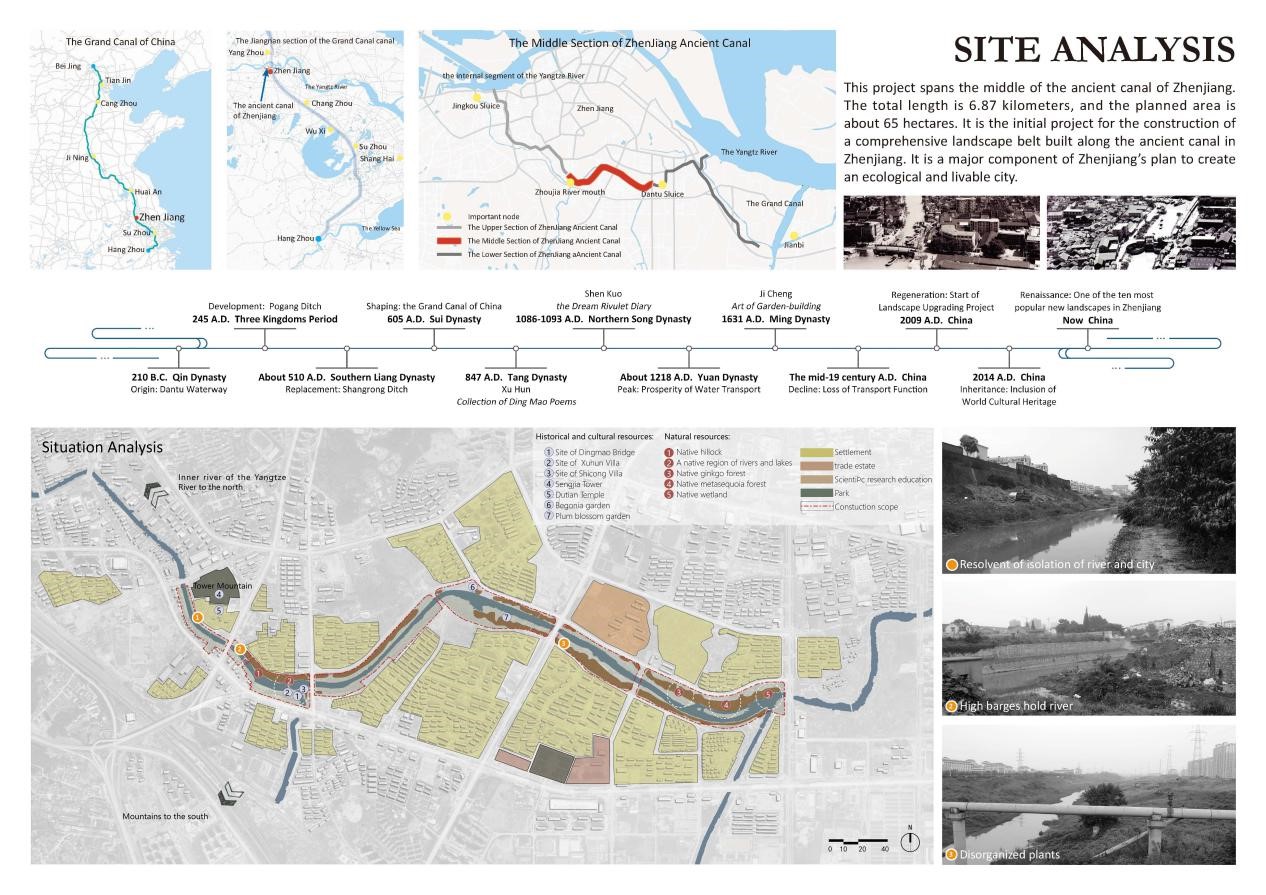
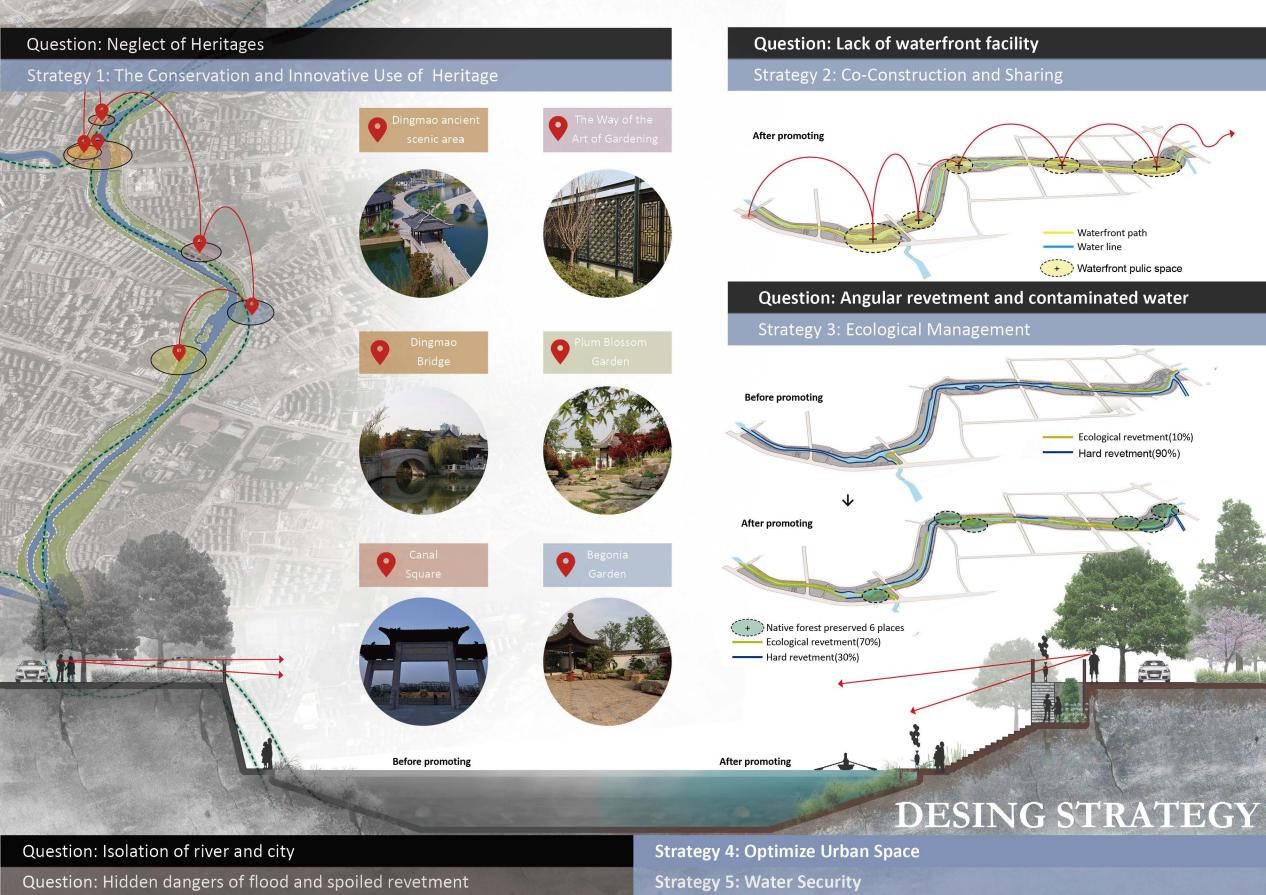


Awards
★2019 International Federation of Landscape Architects(IFLA -APR)
Award of Excellence open space category
★2017 National Excellent Engineering Survey and Design Award, Third Prize
★2015 Shanghai Excellent Design Awards, Second Prize
Link: https://mp.weixin.qq.com/s/qyvySMtFr81g3odwM-ZFGg
The Redesign and Renewal of Shanghai's Zuibaichi Park
Project Address: No. 64, Renmin South Road, Songjiang District, Shanghai
Type: Historic Garden
Scale: 51285 square meters
Year: 2011-2018

The former Zuibaichi park was built in the Song Dynasty, the oldest of Shanghai’s five famed classical gardens. Fulfilling Shanghai’s requirements for urban landscape renewal, its renovation spanned seven years. The project is a significant link in the networking, systemizing, and refinement of public space in Songjiang.
On a foundation of protection and transmission of the pattern and charm of Chinese classical gardens, the garden was organically renewed. This involved:
(1)Traditional Chinese gardening techniques of regulating and perforating the water system to strengthen the waterway’s self-regulating capacity; the remolding of the site’s essence, and the pursuit of cultural rebirth.
(2)The collection, sorting, and reuse of old materials—creating a sense of belonging and identity while reducing costs.
(3)The use of existing buildings and vegetation, organization of streams inside the park, addition of public places for activities, and activation of vital sustainable development within the park.
(4)The interpenetration of classical garden and urban landscapes by integrating topographical variations, as well as resolution of connectivity between the park entrance and the adjacent metro station.
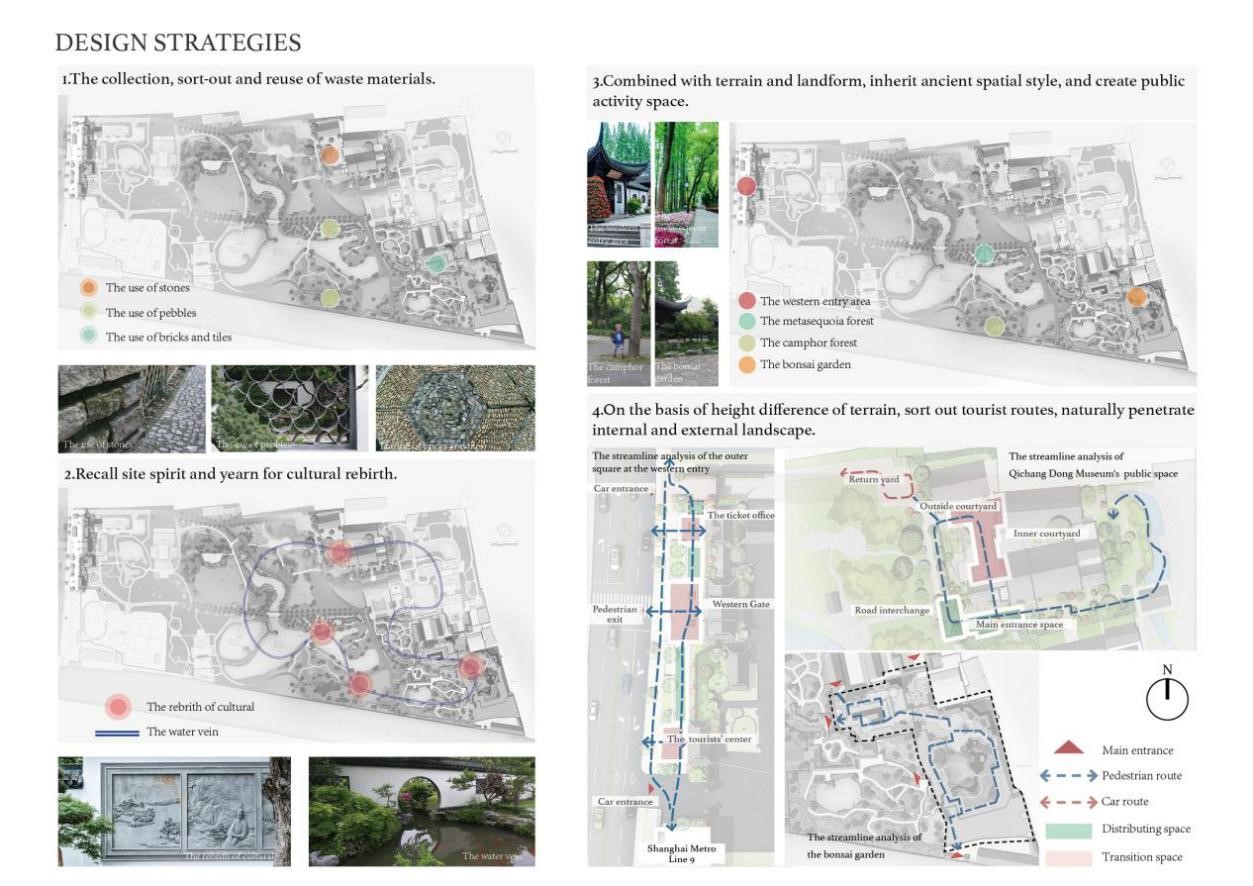

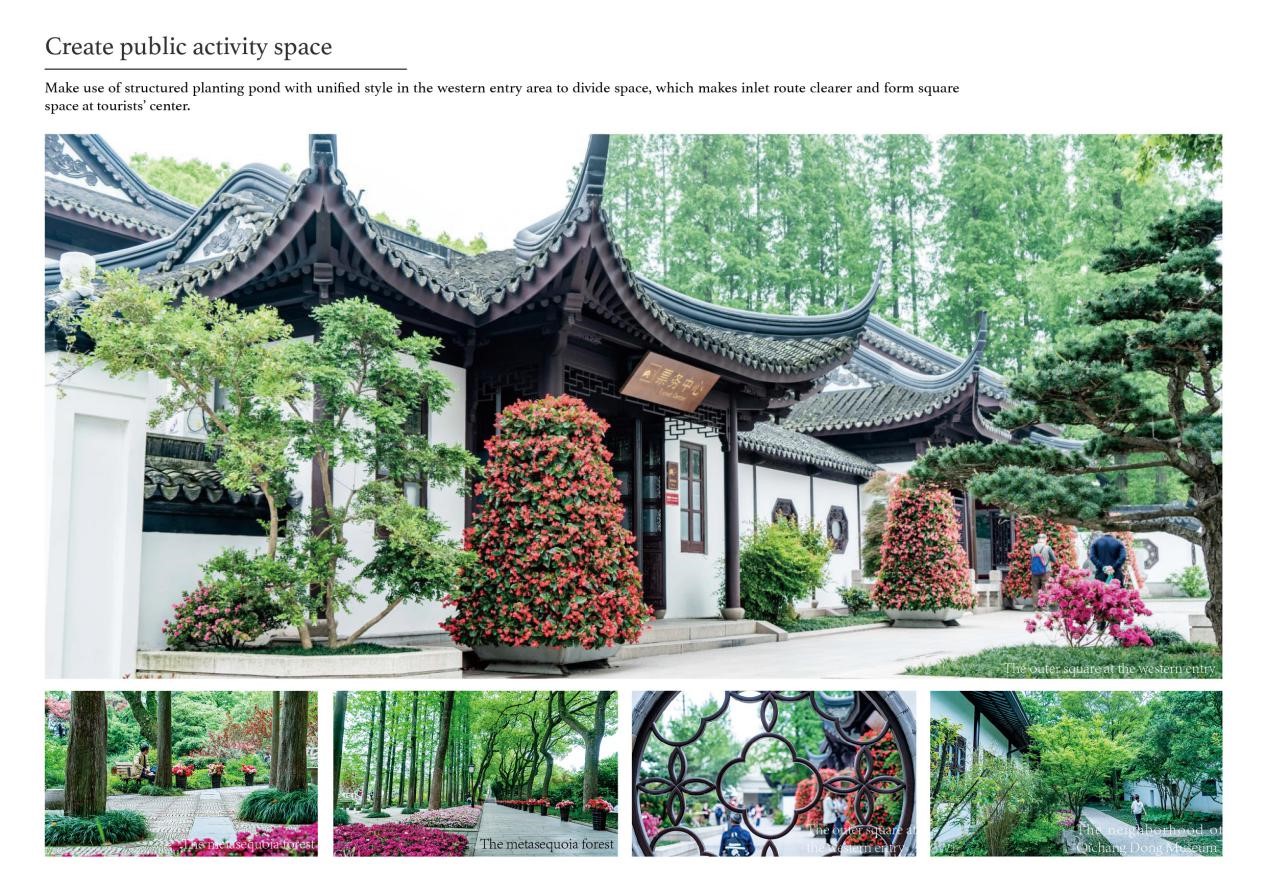
Awards
★2019 British Association of Landscape Industries(BALI), International Award
★2013 Shanghai Excellent Design Awards, Second Prize
Link: https://mp.weixin.qq.com/s/gvlS-AWH3sL4fEE_wxX4kQ
The Wawu Mountain’s Road to Happiness: Exploration of a Landscape Approach to Rural Tourism and Development in Liyang City, China
Project Address: Wawu Mountain, Liyang City, Jiangsu Province
Type: Rural Tourism Road
Scale: 509581 square meters
Year: 2017-2019
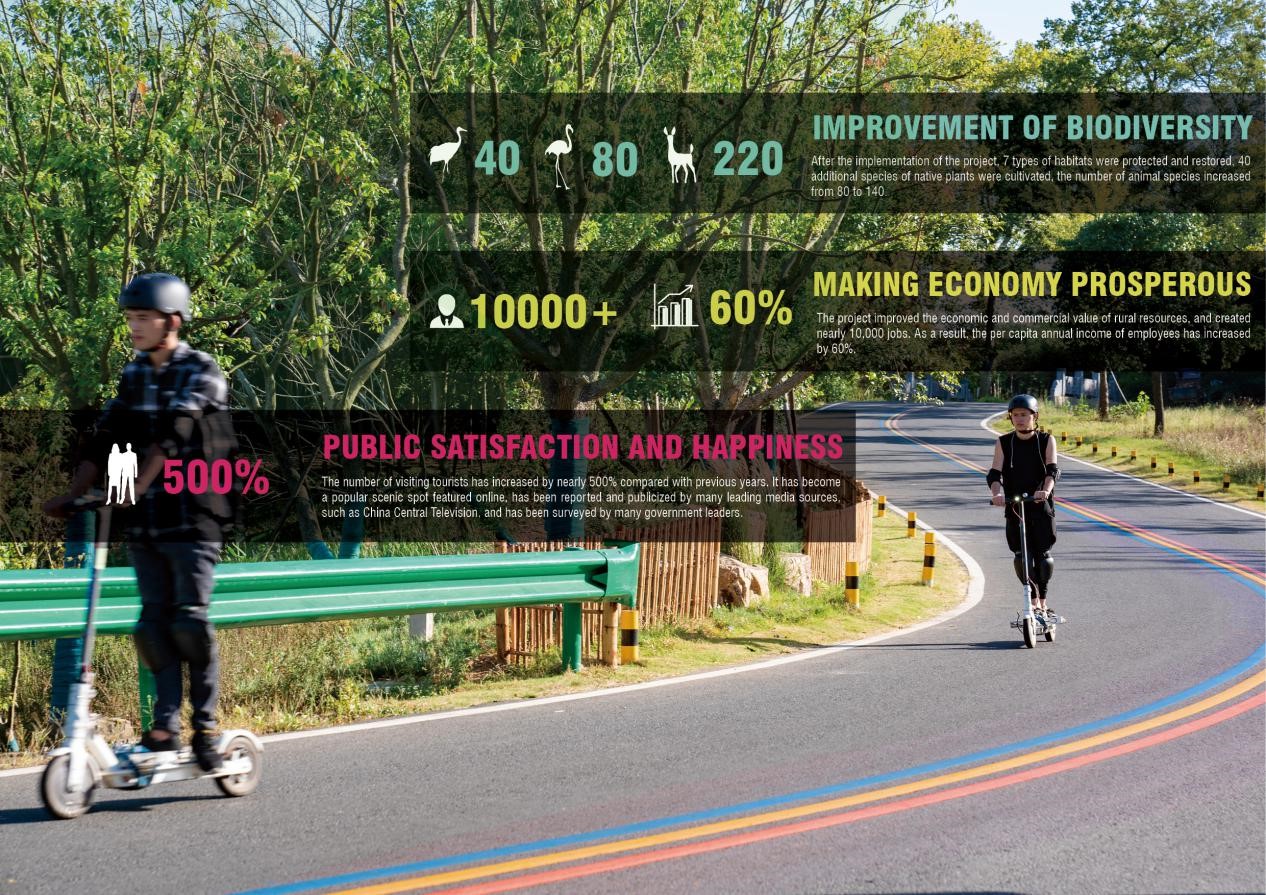
In recent years, China’s rural revitalization strategy has advanced rural tourism’s development. However, the development of tourism in Liyang City still faces problems. These include regional differences and imbalances. They also include lagged development of tourist resources where the “Liyang Rural Tourism Highway—the Road to Happiness” is located, a single industry structure, and low overall income.
In order to create a “Road to Happiness on Wawu Mountain” and explore a landscape approach to rural tourism development the design proposed: 1. Advance the goal and strategy of “Tourism + Ecology + Industry + and Sustainable Development,” and adopt the landscape mode of “line + point” to build a slow-traffic rural tourism corridor and an atmospheric courier station; 2. Build diverse habitats and migration corridors to restore biodiversity; 3. Utilize agricultural resources and folk culture to promote multi-enterprise integration encompassing rural tourism, cultural and creative industries, and agriculture; 4. Adhere to low-maintenance and low-impact architectural design, plant collocation and material selection.
In addition, the rural economy is able to prosper and economic viability is achieved through flexible land, local employment, public participation, and development policies. This presents a significant model for rural revitalization in areas with hilly terrain throughout China.
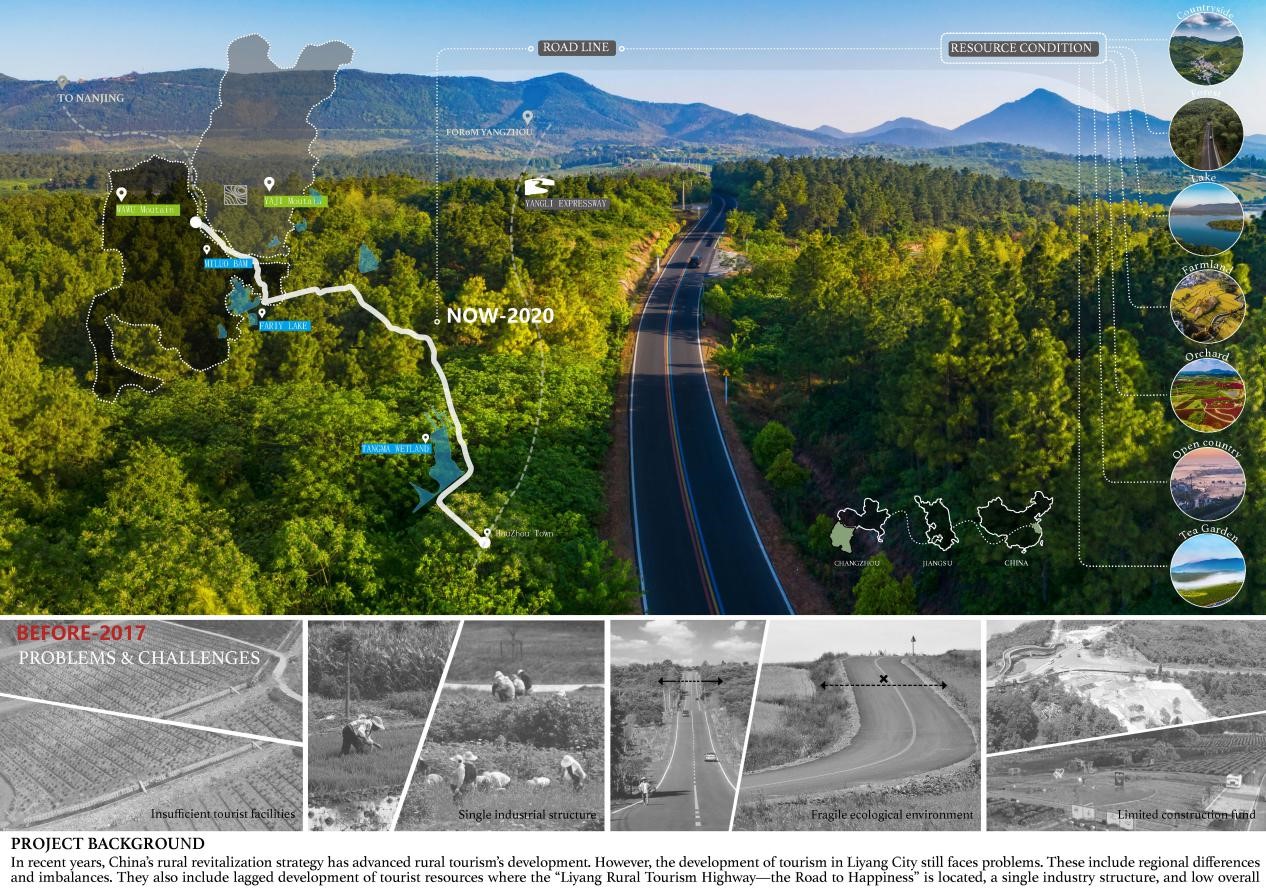
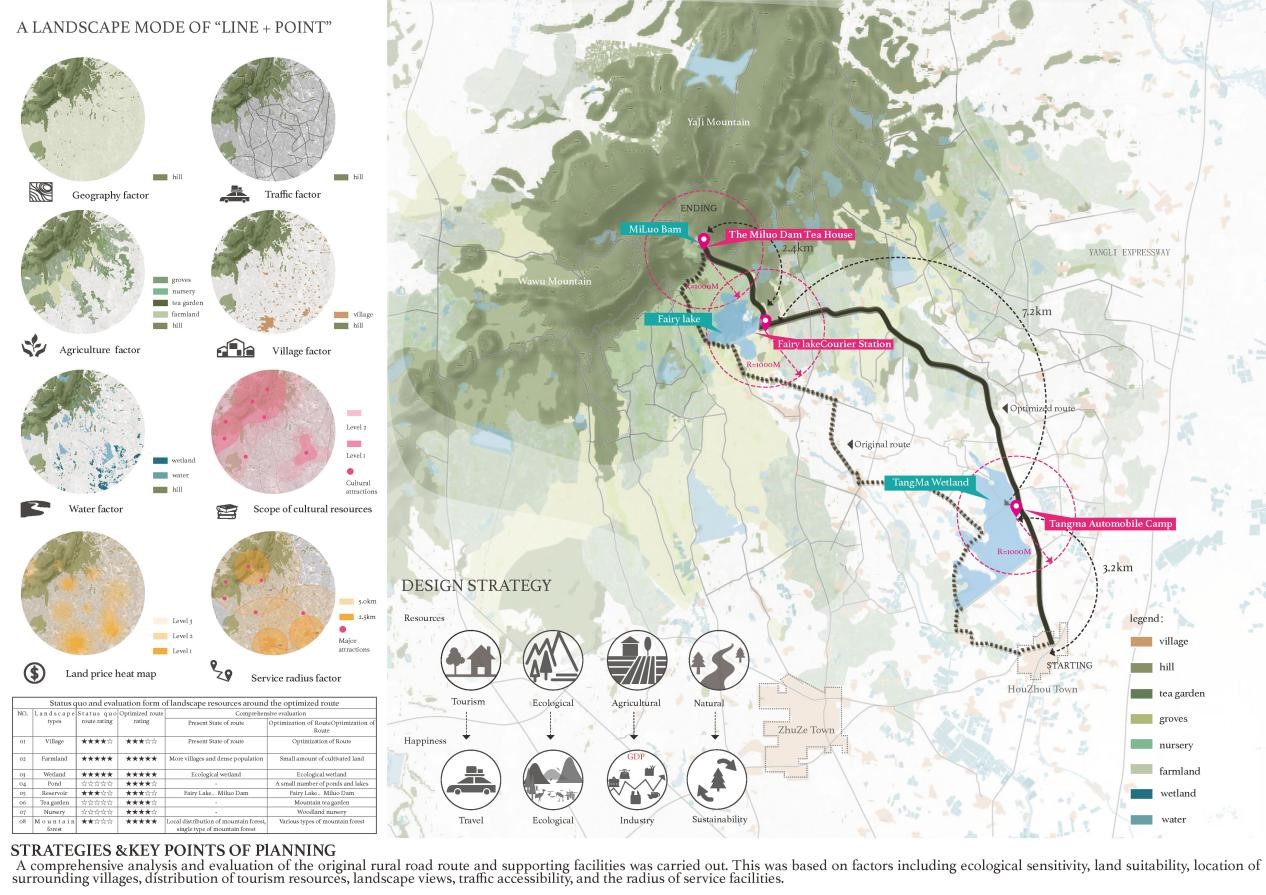
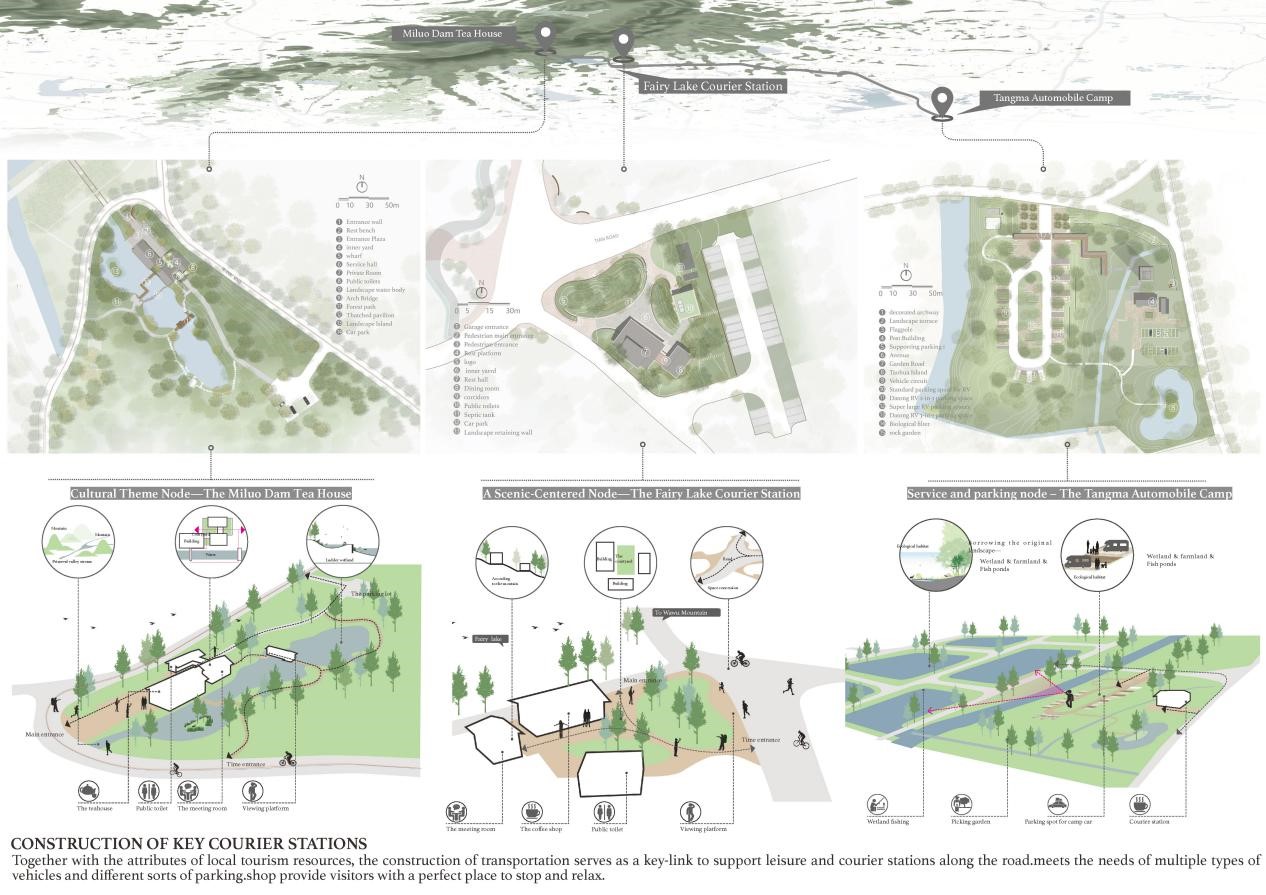
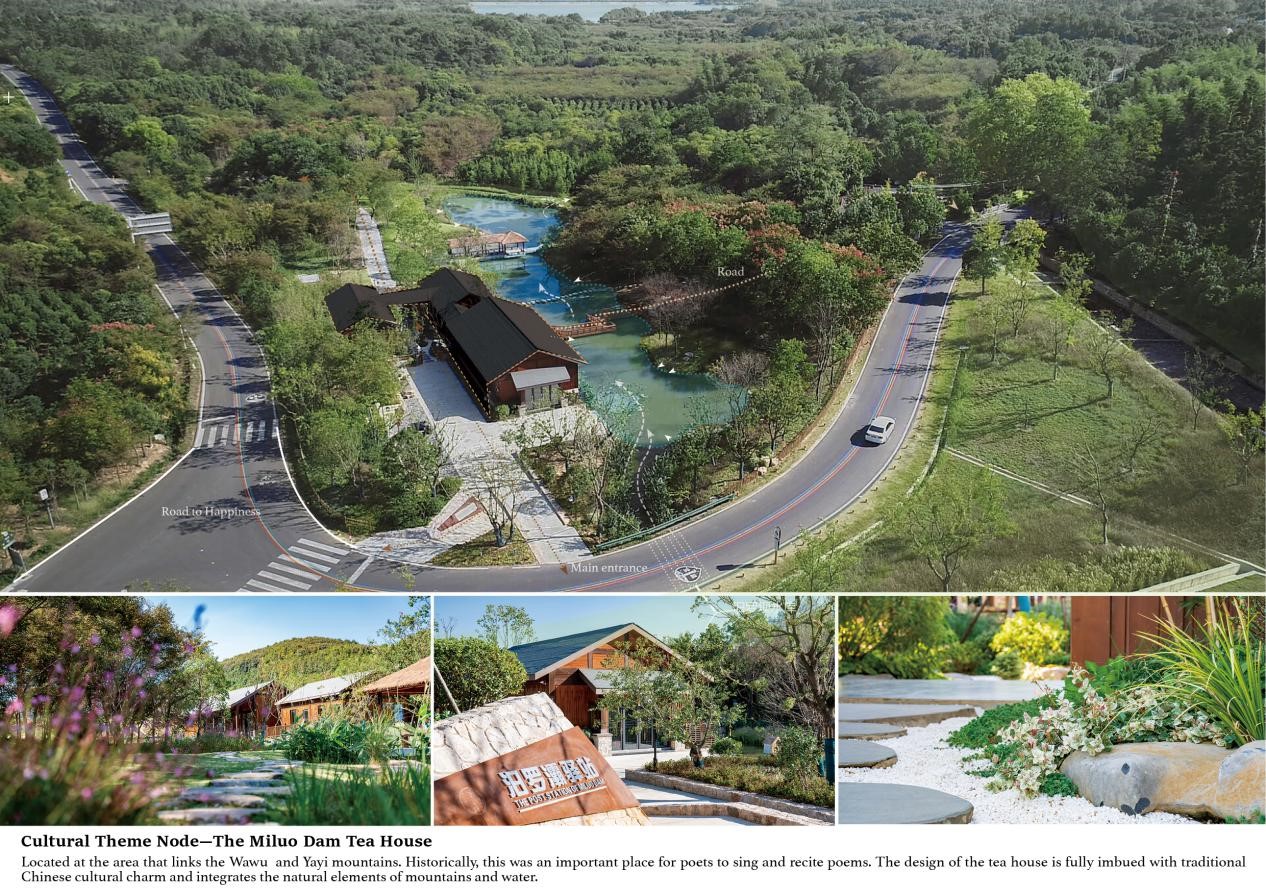
Awards
★2020 IFLA AAPME Economic Sustainability Honor Award
★2020 National Excellent Engineering Survey and Design Award landscape and Garden Design, First Prize
★2018 the eighth IDEA-KING international landscape and design, Award for Excellence
Link: https://mp.weixin.qq.com/s/86jSfrjJN7EEWXXyLaF16w
Linking Campus and Community with Flowers: Design of the Rose Garden at Shanghai Jiao Tong University
Project Address: Shanghai Jiaotong University, 800 Dongchuan Road, Minhang District, Shanghai
Type: Botanical Theme Garden
Year: 2017-2018
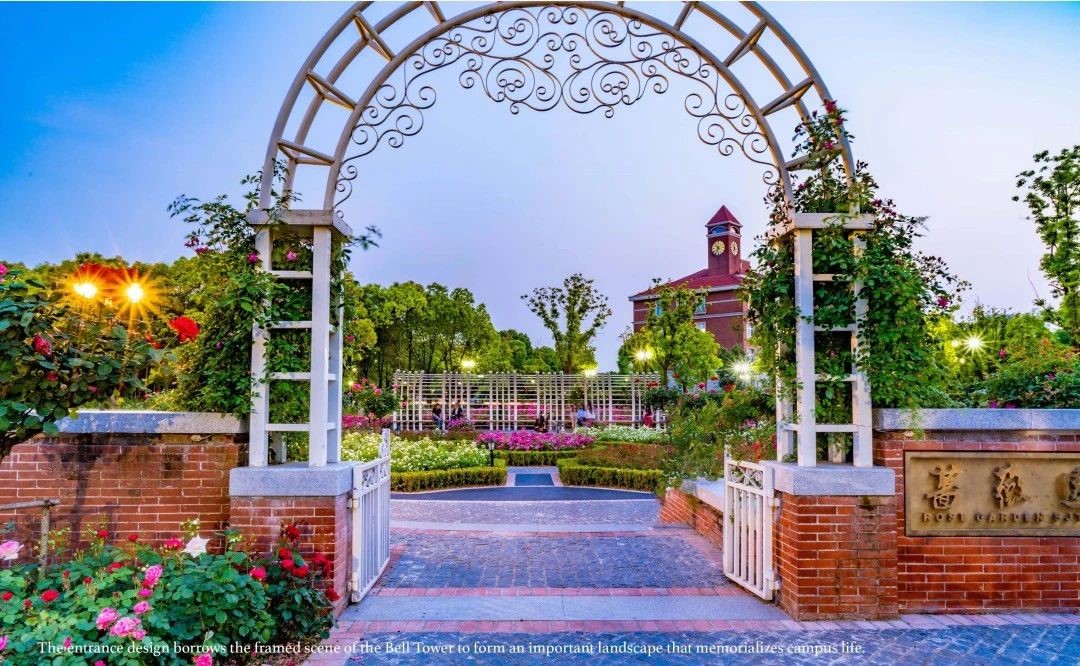
A specialty botanical garden with an area of 4000㎡, the Rose Garden was built at the corner of reserve construction land in the northeast of the university’s Minhang Campus. Its characteristics are: 1. Over 50 species of Rosaceae plants were planted on a small site; 2. Subtle terrain changes were adopted creating a variety of interstitial spaces; 3. Harmony was achieved with the surrounding environment through techniques including concealing certain views, and borrowing others at different perspectives; 4. Elements including landscape walls with red bricks and white mortar, and pure white iron frames referenced the architectural heritage of the old Xuhui Campus.
The completed Rose Garden was well received by teachers, students, and residents of surrounding communities. It has become a calling card of Shanghai Jiao Tong University, expressive of the institution’s humanistic spirit and memory. It is also a most beautiful and popular venue for campus social activities, and a source of scientific research and teaching, including in the fields of landscape architecture, botany and horticulture. It is not only an important place to build trust and confidence among faculty and students, but also is a new catalyst for harmonious interactions between the campus and surrounding communities.
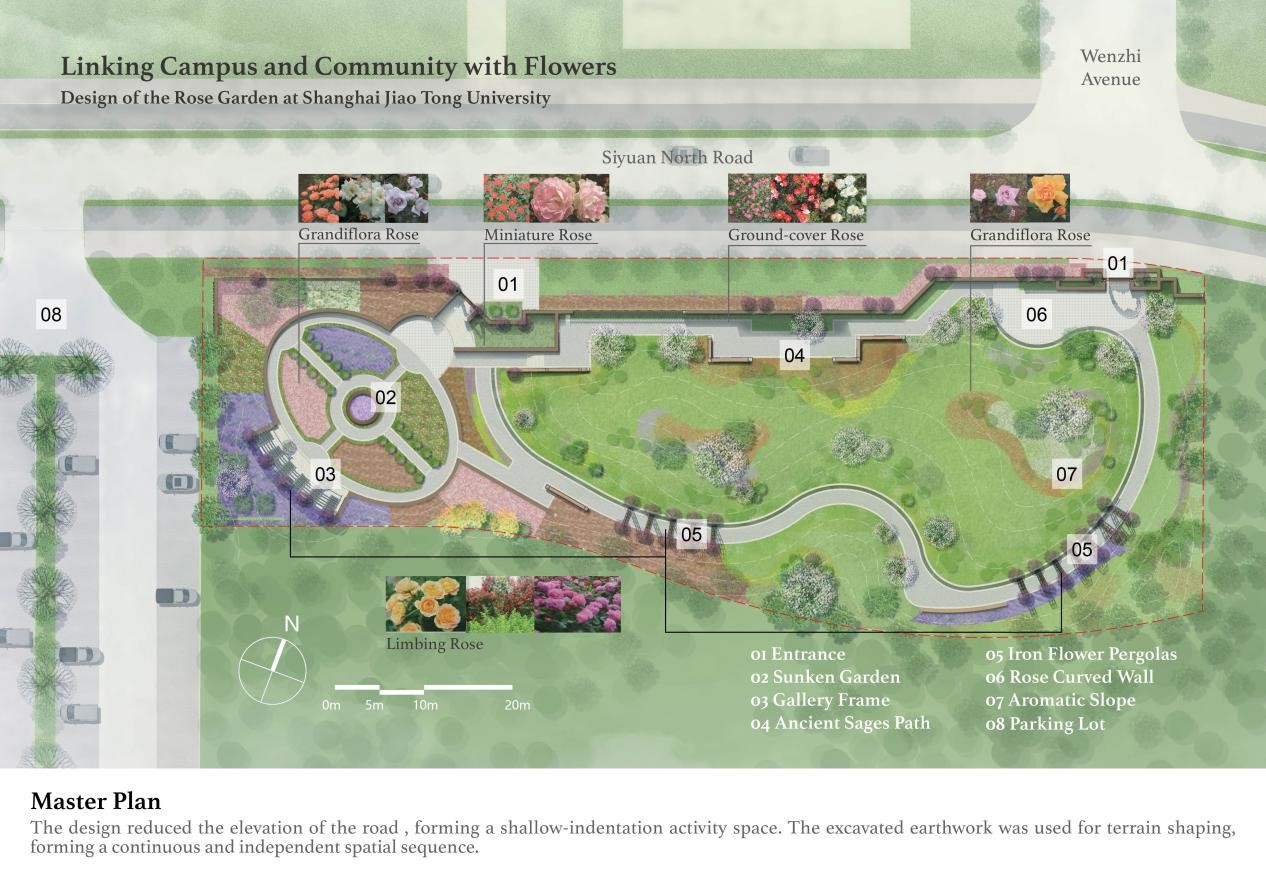


Awards
★2020 IFLA AAPME Social and Community Safety, Honor Award
★2019 British Association of Landscape Industries(BALI), International Award
Link: https://mp.weixin.qq.com/s/IA1Zf9pEkCn5svjUYmlQXg